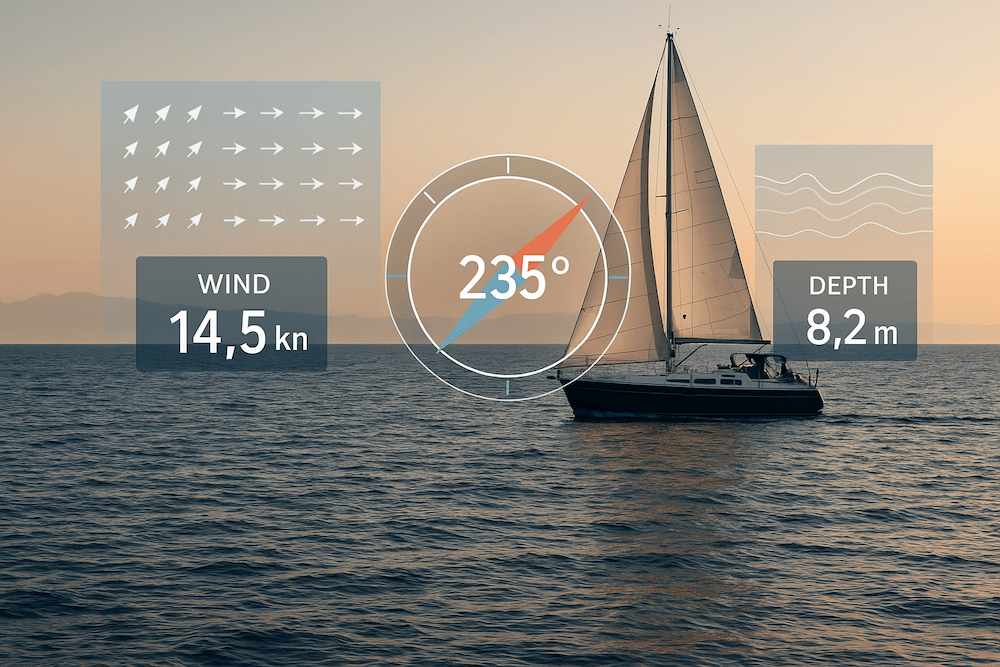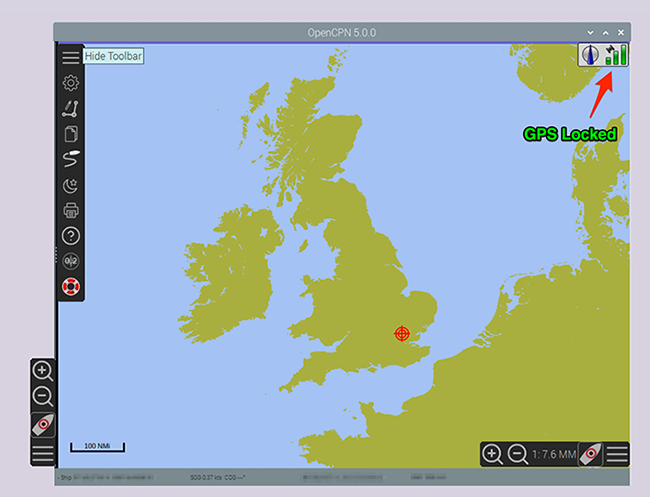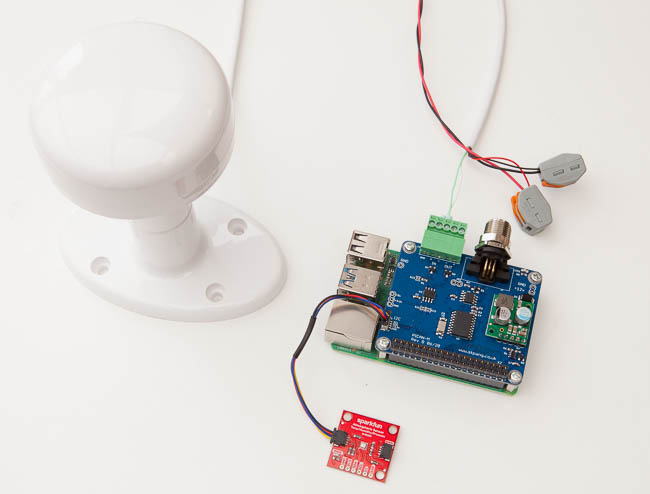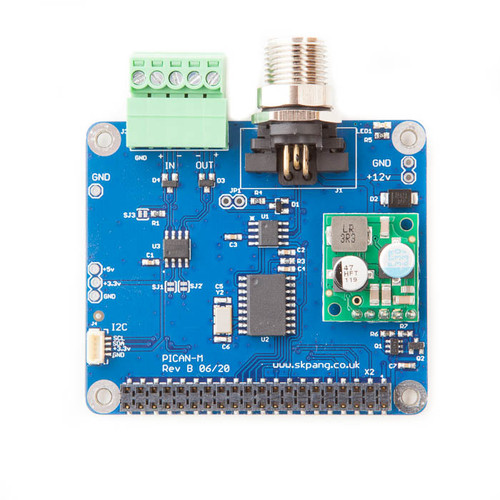Blog
Recent Posts
Turn Your Raspberry Pi into a Smart Marine Hub with OpenPlotter and Signal K
Posted by on
 The world of marine electronics is evolving. Once dominated by expensive, closed systems with limited flexibility, there’s now a shift toward something more open, more personal, and—frankly—more exciting. At the heart of this movement is OpenPlotter, a Linux-based operating system tailored for Raspberry Pi computers, and Signal K, an open data standard designed to bring all your boat's information together in one place.
The world of marine electronics is evolving. Once dominated by expensive, closed systems with limited flexibility, there’s now a shift toward something more open, more personal, and—frankly—more exciting. At the heart of this movement is OpenPlotter, a Linux-based operating system tailored for Raspberry Pi computers, and Signal K, an open data standard designed to bring all your boat's information together in one place.
What is OpenPlotter?
 OpenPlotter is not just software—it’s a philosophy. It invites boaters, sailors, and tinkerers to take control of their onboard systems and reimagine what a marine computer can do. With OpenPlotter installed on a Raspberry Pi, suddenly that little $35 board becomes a chartplotter, a weather station, a data logger, and a dashboard for every sensor on your boat.
OpenPlotter is not just software—it’s a philosophy. It invites boaters, sailors, and tinkerers to take control of their onboard systems and reimagine what a marine computer can do. With OpenPlotter installed on a Raspberry Pi, suddenly that little $35 board becomes a chartplotter, a weather station, a data logger, and a dashboard for every sensor on your boat.
Imagine this: you're sailing up the coast and your helm station is showing wind speed, direction, GPS coordinates, and nearby AIS targets—all on a screen powered by a Raspberry Pi. OpenPlotter handles it all behind the scenes, using tools like OpenCPN for chart plotting and integrating with GPS dongles, AIS receivers, and more. You’re not locked into one brand’s ecosystem. You choose your tools, your layout, and even what data matters to you.
What can you do with it?
-
Chart plotting: Plug in a USB GPS and use OpenCPN to display real‑time navigation charts on a monitor or tablet thelowcostsailor.com.
-
AIS reception: Use a cheap USB TV tuner as an AIS decoder to track nearby ships and display targets on the chart.
-
Weather integration: Overlay marine weather data — winds, pressure, forecasts — directly onto your chart.
-
Unified sensor hub: Connect your onboard sounder, wind instruments, depth sensors via NMEA‑0183/2000 to mix into Signal K and monitor them in one unified dashboard.
-
Wireless access: Create your own Wi‑Fi hotspot. Access live instrumentation on tablets or phones—no wires to the salon.
-
Automation & dashboards: Use Node‑RED or Signal K plugins to automate tasks (e.g., send alerts when batteries are low, steer autopilot, log data to cloud).
-
Camera monitoring: View onboard cameras (cockpit, engine bay) on the same interface.
-
Headless operation: It can run without a monitor (“headless”), accessible via VNC or browser—ideal for central installations.
What is Signal K?
Signal K is the glue that holds everything together. It’s not a device, but a language—a way for all these components to speak to each other. Whether it’s a depth sensor speaking NMEA 0183, or a CAN-based wind instrument talking over NMEA 2000, Signal K listens, translates, and broadcasts. Your boat becomes a unified system rather than a mess of competing standards.
One of the most appealing aspects of Signal K is its user interface. Via a simple web browser, you can view real-time dashboards showing everything from engine RPM to water temperature. Want to see your heading, battery voltage, and bilge status from your smartphone? You can. Signal K turns your boat into a connected environment where data isn’t buried in hard-to-reach menus—it’s right at your fingertips.
Real‑World Examples
-
A low‑cost plotter and AIS system built with a Raspberry Pi, USB GPS, simple TV tuner, and OpenPlotter provides a full-featured navigation setup for a fraction of the cost of commercial units thelowcostsailor.com+1thelowcostsailor.com+1.
-
Sailors have created touring dashboards displaying battery voltage, wind, depth, and route data, all accessible from their phone or cockpit chartplotter screen .
-
DIY wind sensors, autopilot logging, and telemetry dashboards are also common—driven by the extensibility of Signal K and Node‑RED openplotter.readthedocs.io+9open-boat-projects.org+9signalk.org+9.
OpenPlotter and Signal K also bring automation into the picture. With integration into Node-RED, a visual programming tool, you can set up intelligent workflows. For example, when your battery voltage drops below a threshold, you might receive a push notification—or even trigger a relay to shut down non-essential systems. It’s not just about watching data; it’s about acting on it.
 Setups often include Raspberry Pis inside weatherproof enclosures mounted below deck, connected to touchscreens or remote displays. Dashboards rendered through Signal K interfaces can show map overlays with live GPS tracking, wind roses, or even engine diagnostics if you’ve tapped into the right bus.
Setups often include Raspberry Pis inside weatherproof enclosures mounted below deck, connected to touchscreens or remote displays. Dashboards rendered through Signal K interfaces can show map overlays with live GPS tracking, wind roses, or even engine diagnostics if you’ve tapped into the right bus.
And while the software is critical, the hardware matters too. That’s where the PICAN-M board comes in. Built specifically for marine use, the PICAN-M board transforms the Raspberry Pi into a true marine gateway. It allows the Pi to interface directly with both NMEA 0183 and NMEA 2000 networks, enabling the full range of data gathering and transmission. Designed with power efficiency in mind, it includes a switch-mode power supply that lets the Pi run directly off a 12V system—ideal for life on a boat.
The PICAN-M board, available from Copperhill Technologies, connects via a standard HAT interface and brings screw terminals and Micro-C connectors for ease of use. It’s designed for robust and reliable performance in marine environments, and when paired with OpenPlotter, it creates a full-fledged marine monitoring and navigation system—no expensive plotter needed.
Why this setup matters
-
Cost‑effective: Replace expensive proprietary marine electronics with a Raspberry Pi and open‑source software.
-
Flexible & Extensible: Add sensors, autopilot control, logging, weather, and custom automation—all in one modular platform.
-
Community‑driven: Active projects, plug‑ins, and forums—supported by Open Marine, Sailoog, Signal K, SeaBits, and many sailor enthusiasts.
-
Portable & shareable: Wirelessly share your navigation and instrument data to any device on board—and even off‑boat.
Ultimately, this combination—OpenPlotter, Signal K, Raspberry Pi, and the PICAN-M—is more than a project. It’s a statement about empowerment. It says that marine electronics don’t have to be opaque or expensive. They can be understandable, hackable, customizable, and fun. And best of all, they can grow with you.
Whether you're a weekend cruiser, a full-time liveaboard, or just a curious sailor with a love for tech, this open-source toolkit gives you the freedom to make your boat smarter on your own terms. Welcome to the future of sailing—one where the helm is digital, the system is open, and the possibilities are endless.
 PICAN-M - NMEA 0183 & NMEA 2000 HAT For Raspberry Pi With SMPS
PICAN-M - NMEA 0183 & NMEA 2000 HAT For Raspberry Pi With SMPS
The PICAN-M HAT from Copperhill Technologies is a versatile marine communication board designed for the Raspberry Pi, providing seamless integration with both NMEA 0183 and NMEA 2000 networks. Featuring built-in support for the CAN bus via Micro-C connectors and RS422 screw terminals for NMEA 0183, this HAT enables full connectivity with marine instruments and navigation systems. It includes a wide input power supply (SMPS) that allows the Raspberry Pi to be powered directly from a vessel’s 12V system, simplifying installation. Ideal for use with open-source software like OpenPlotter and Signal K, the PICAN-M turns a Raspberry Pi into a capable and cost-effective marine data hub. More information...
Building a Marine Data Logger with Raspberry Pi and PiCAN-M: A Step-by-Step Guide
Introduction Marine electronics don’t have to be expensive or proprietary. With a Raspberry Pi and the PiCAN-M HAT from Copperhill Technologies, you can build a powerful and fully customizable data logger for your boat. This project will show you how to: Capture NMEA 0183 and NMEA 2000 data, Visualize real-time data using Signal K and OpenPlotter, Log sensor values [...]
 Loading... Please wait...
Loading... Please wait...
